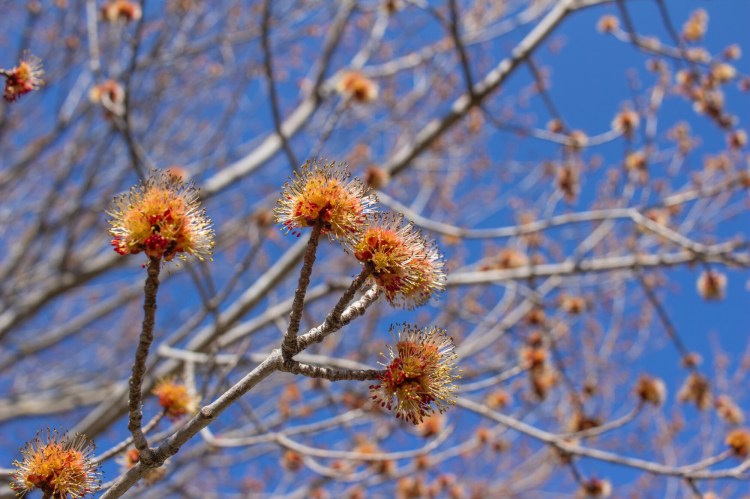Yardscaping is as much about the quality of water in our ocean, lakes, rivers and streams as it is about how the landscape around our houses grows.
But the two are related.
State Horticulturist Gary Fish updated the Camden Garden Club last month on the revival of a program that he helped start in 1999, when he worked with the Board of Pesticide Control. Its purpose is to encourage Mainers to turn their properties into places that require fewer pesticides, less fertilizer and irrigation to prevent yard pollution from running off into waterways, as well as to support native insects and animals.
When I began writing this column in 2004, one of my first topics was plans for a yardscaping demonstration garden by Back Cove in Portland. The garden was completed in 2011 but disappeared a few years ago when work began on a sewer separation project that is still ongoing.
Although the garden is gone, its goals remain.
The key is to have less lawn and, for a waterfront property, have the edge of the lawn well away from the edge of the water.
Lawns are problematic because they require more watering and more chemicals than other landscapes. And then there is the pollution, not just from runoff.
“One hour on a riding mower equals the air pollution of driving a car 400 miles,” Fish said.
For the lawn that remains, the grass species should be fescues rather than the Kentucky bluegrass that is a major part of most lawn mixes. Fescues require less water and less fertilizer.
If you are going to irrigate your lawn, do so only once or twice a week, bringing the total from rain and irrigation to between 0.75 and 1.5 inches a week, and do it early in the morning. Use a rain gauge to keep track. Watering more than that is babying the lawn and may lead to diseases. Also, in late summer, it won’t hurt to let the lawns go dormant, with as little as a quarter inch of watering every three weeks.
Any paths in lawns and gardens should be curved to slow runoff. Landscapes should include layers, with tall trees, shorter shrubs and lower perennials, to absorb rain as it falls. Paving should be minimized. And runoff from the the roofs should be caught in rain barrels or directed into vegetated areas, which may include rain gardens.
Reducing runoff is only a part of the reason to cut down on the the amount of lawn. In good garden designs, lawns should be borders to gardens, paths from one place to another, and play areas for croquet and swing sets.
Gardens should also have a wide variety of plants – mostly native, although some well-behaved non-natives could be included.
The garden should have blossoms throughout the season, to feed bees and other pollinators.
I have never thought of maples as flowering plants, but they do have blossoms. And red maples, of which we have several on our property, are among this region’s earliest blooming plants, providing nutrition to pollinators when they are desperately need of it.
At the other end of the spectrum are fall bloomers, such as asters and goldenrod. Fish said many people avoid goldenrod because they think they are allergic to it, but noted that goldenrods are insect-pollinated, not wind-pollinated, and so are generally not an allergy problem.
He also touched on using pesticides in the garden, stressing the rules of integrated pest management, which first say don’t assume that all insects are bad. There are good ones – bees, butterflies and moths, for example.
Second, if you have identified a bad insect, hand pick it, trap it or block it from your plants before using pesticides, which should be a last resort.
Before applying a pesticide, read the label – and read it in the store, before you buy it, to make sure it will work on the insect you’ve identified.
He said the worldwide decline in beneficial insects, which some have called the insect apocalypse, is partly from our increase in outdoor lighting. The insects keep flying at night because of the lights and get exhausted. He said research is being done at the University of Maine on ways to reduce lights’ harmfulness.
Another way to help beneficial insects is finding places for them to nest. They include hollow stems, logs left to rot and, surprising to me at least, bare ground.
As a gardener, I often think that any area of bare soil needs a plant. Not true. And the native ground-nesting bees will thank you for it.
Tom Atwell is a freelance writer gardening in Cape Elizabeth. He can be contacted at: tomatwell@me.com.
Send questions/comments to the editors.



Success. Please wait for the page to reload. If the page does not reload within 5 seconds, please refresh the page.
Enter your email and password to access comments.
Hi, to comment on stories you must . This profile is in addition to your subscription and website login.
Already have a commenting profile? .
Invalid username/password.
Please check your email to confirm and complete your registration.
Only subscribers are eligible to post comments. Please subscribe or login first for digital access. Here’s why.
Use the form below to reset your password. When you've submitted your account email, we will send an email with a reset code.